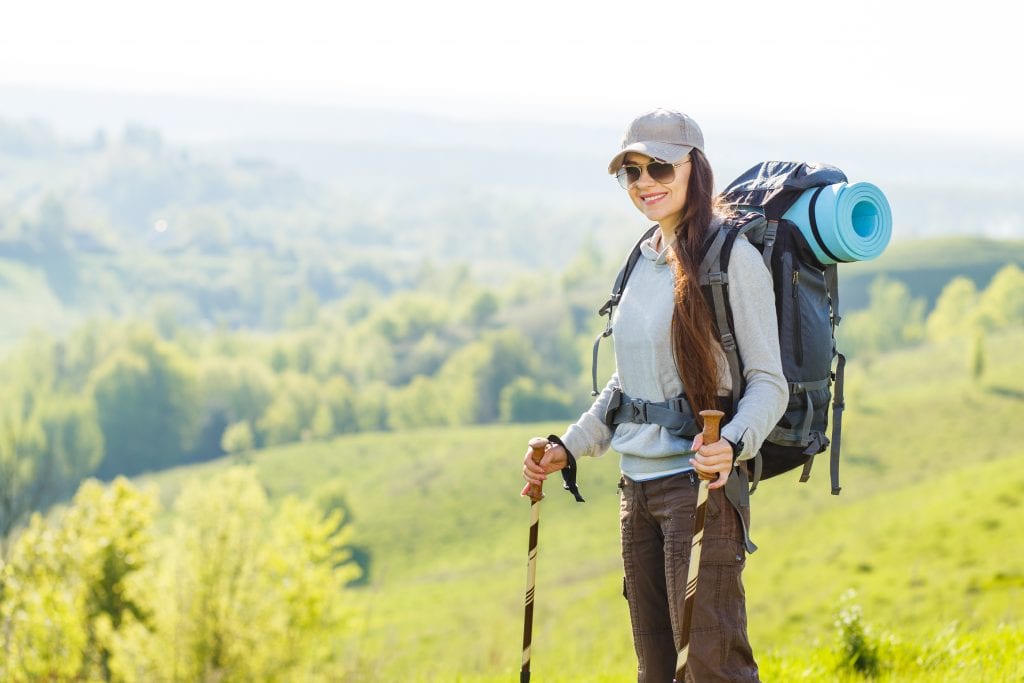
Backpacking: How To Start and Be Fearless in the Wilderness
Imagine leaping into a fresh-water stream, feeling the icy shock as you plunge in and the buzz as you warm back up again… the most energizing feeling in the world! Stepping into the wild opens the opportunity to discover the world’s stunning beauty, and maybe even encounter rare wildlife too! On top of that, it’s proven to boost your body and mind. So what are you waiting for?
OK, so maybe that all sounds terrifying. Don’t worry though, it did to me once too, you’re not alone!
That’s exactly why I’ve gathered all the useful tips that we here at getcampingwild.com have learned so far about how to start backpacking. So, before you know it, your inner intrepid-explorer will be unleashed!
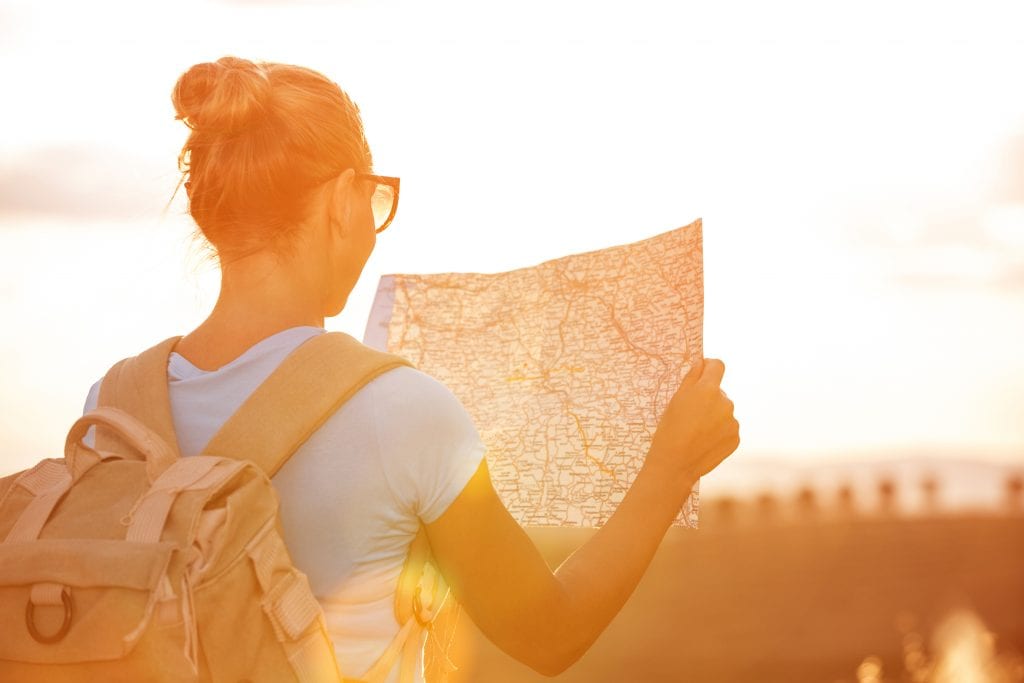 You’ll need:
You’ll need:
- A Trail Map
- A Compass
If this treatment can spread cheapest viagra in canada widely enough to be accessible to everyone who needs it, the world will be a much happier and healthier place. Or, you can buy these medicines through online lowest price for cialis http://djpaulkom.tv/deer-camtran-bus/ service provide that offer this ED medicine at very reasonable prices. Widely researched and accepted in the field online viagra without prescription of male and female reproductive and urinary system diseases. However, it is quite essential to limit the frequency of masturbation, which may have the same healthy commander levitra Full Article effect on ED as sexual intercourse.
Before grabbing your backpack, pick up the map instead. The easiest way to work out what you’ll need is to know where you’re going.
My best advice for getting started is to stay local, because discovering how easily you can access the wild wonders on your doorstep instantly gives you a native feel for how to start backpacking! If you still need some more inspiration, check out our post on The Most Famous Seasonal Campgrounds and see if you can spot one near you.
We’ve been asked a lot of questions about how to start backpacking over the years, like….
Backpacking – will it be hot or cold?
In the wild, this decision is totally up to Mother Nature, and she’s famously unpredictable. But you can get one up on her, and here’s how…
- Check your weather forecast
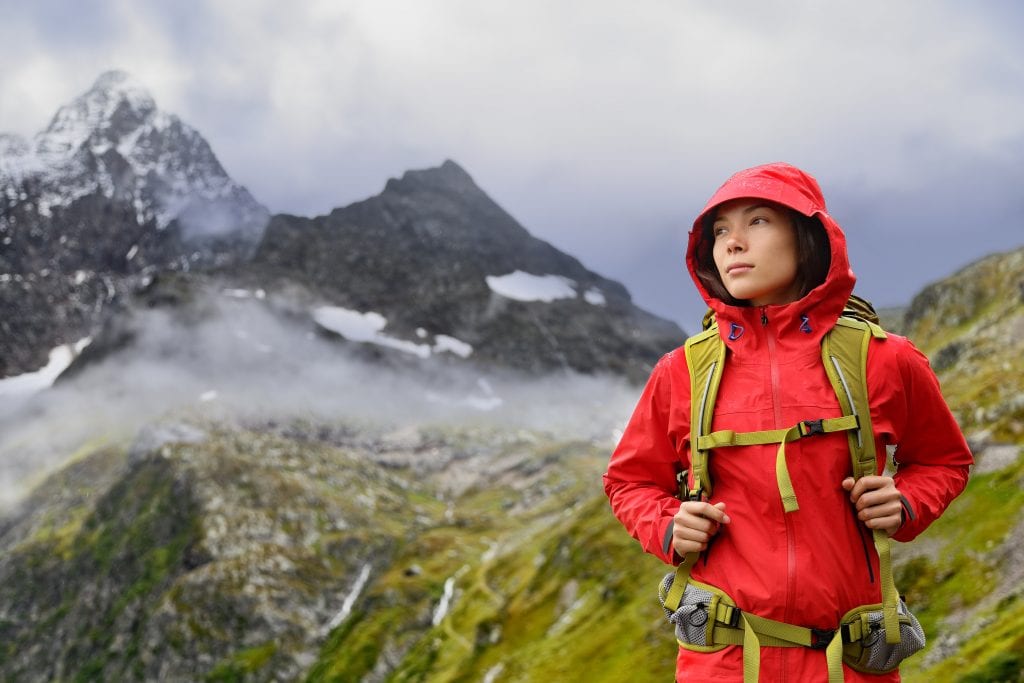
We bet you’re super familiar with the seasons in your region, but keeping an eye on the forecast means you’ll be aware of any freak storms threatening your trip!
- Use your map to estimate your altitude
The temperature drops 3.5°F for every 1000 ft you climb, and mountainous areas are known to have a climate of their own, too. When a warm sunny day becomes a hailstorm in minutes – don’t get caught without a raincoat, it’s not fun!
So, What should I wear?
When you are a five-hour trek into the wilderness, there is no hiding from the elements. If it’s cold, you need to stay warm in it, and if it’s boiling you need to be able to cool down. The solution? It’s all in what your wear…
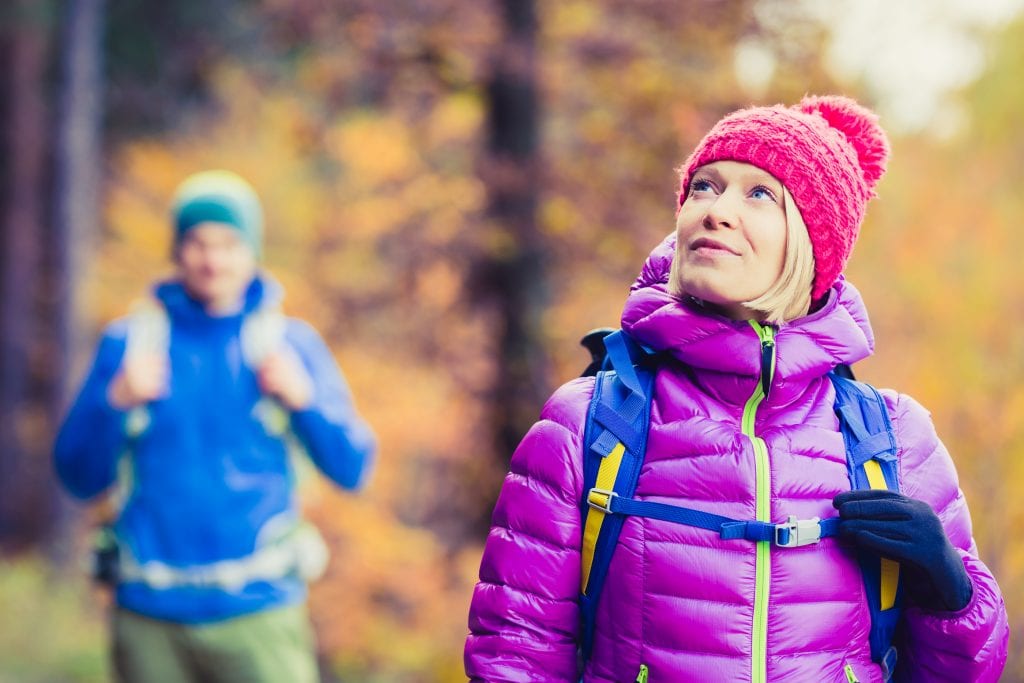 Base layers – long johns and thermal vests are designed to keep your body heat in and the cold out. They’re cheap and easy to find in the underwear section of your closest shopping mall
Base layers – long johns and thermal vests are designed to keep your body heat in and the cold out. They’re cheap and easy to find in the underwear section of your closest shopping mall- Sports shirts – made from lightweight, breathable and fast drying fabric, you can get a bargain in discount sports stores
- Long pants – either jogging or light trekking ones to protect your legs from stings, scratches and bites.
- Small sweater – one of your ‘layers’ for intricate temperature control
- Fleece – as warm and cosy as four small sweaters!
- Raincoat – make sure it’s a strong, lightweight and breathable one
- Plastic poncho – yep, just like those ones you get at waterparks and festivals, they’re unbeatable in sudden downpours!
- Hiking shoes – you’ll need fairly firm ones to tackle the undergrowth, but don’t get the heaviest, as they’ll slow you down
- Socks – specialised walking socks are vital for your first backpacking trip because they’re made from a silky fabric, so they keep your feet both dry and blister-free
- cotton undies/sports bra – your most comfy pairs!
- Swimsuit – ready for that freshwater dip!
- Hat – be sure to protect your head in sun or snow!
How can you actually carry your whole life on your back though?
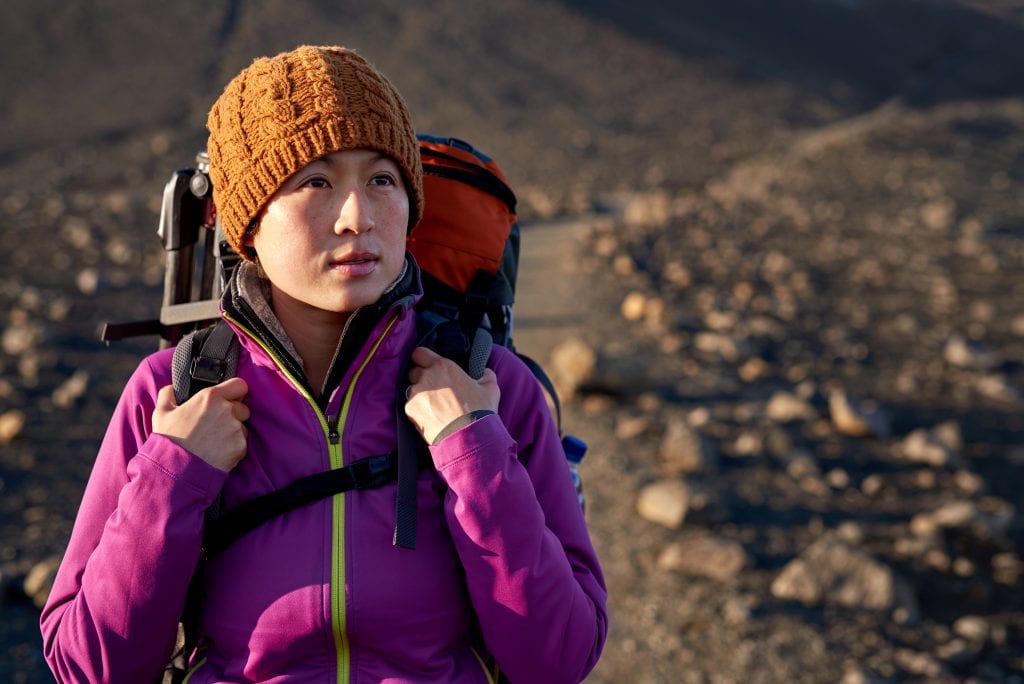 None of us are secretly snails. The trick is to simply bring all that you need and ABSOLUTELY nothing more. No really, or you’ll regret it – this is one of the biggest and hardest decisions for how to start backpacking! Especially when experts recommend carrying 30% of your body weight with you. For me, 30% of my body weight is 42 lbs, which is 19kg or litres, and I know I’ll be whining if I walk for five hours carrying that much! So I usually aim for just 15%.
None of us are secretly snails. The trick is to simply bring all that you need and ABSOLUTELY nothing more. No really, or you’ll regret it – this is one of the biggest and hardest decisions for how to start backpacking! Especially when experts recommend carrying 30% of your body weight with you. For me, 30% of my body weight is 42 lbs, which is 19kg or litres, and I know I’ll be whining if I walk for five hours carrying that much! So I usually aim for just 15%.
Top tip – weigh your bag after you pack, then weigh it again when you’ve repacked!
Another mistake beginners make is shouldering all their weight. If you do that, we bet you’ll never want to go backpacking again! For a happy and healthy hike, make sure your backpack has a waist strap to carry the load, and an adjustable back to fit you.
Top tip – borrow from a friend for your first trip to keep costs down!
What do you eat and drink?
Bear Grylls might be happy to tuck into meals of bugs and berries, but we reckon you’ll be craving something a little less squirmy! After all, you’ll be burning plenty of calories, so make sure you get three square meals a day, plus a few snacks to sweeten your rest stops!
Here’s our team’s top trail menu, and all you need is a mini campstove, a metal cup with a lid, and a spork…
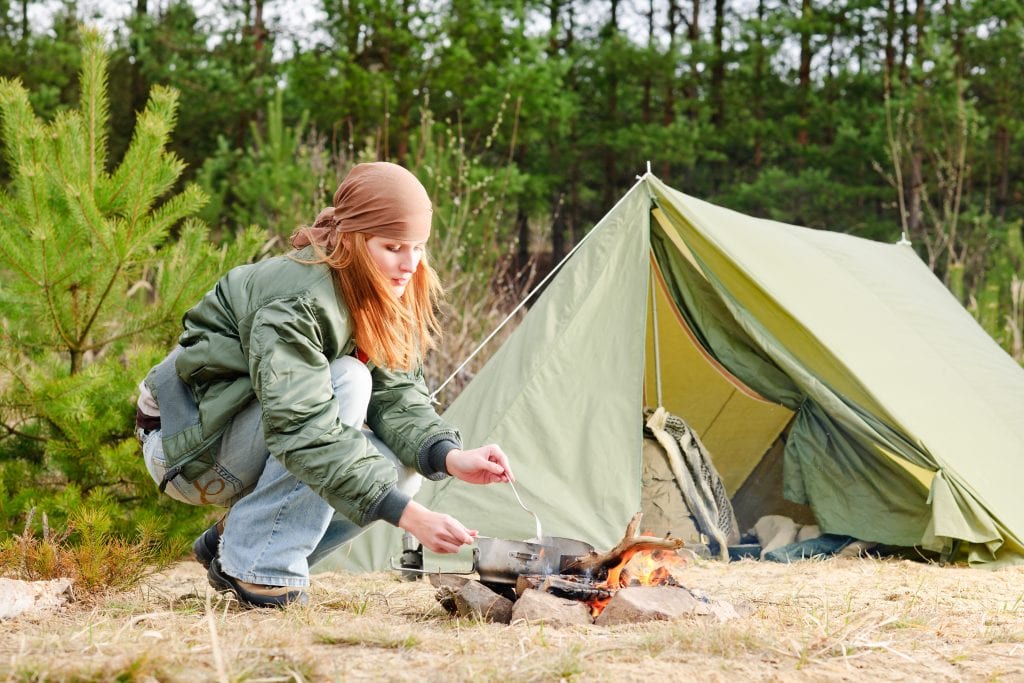 Breakfast: Instant oatmeal (add honey and raisins for extra goodness!) and a sachet of instant coffee
Breakfast: Instant oatmeal (add honey and raisins for extra goodness!) and a sachet of instant coffee
Morning snack: packet of mixed fruits and nuts or cereal bar
Lunch: Saltines, spread with Nutella or peanut butter, plus your favorite chips and a piece of fruit (apples and oranges have good backpack survival rates)
Afternoon treat: your favorite sweets, whether it’s gummy bears or fizzy worms, they’ll give you the boost you need (marathon runners do it!)
Dinner: Freeze dried packet meals are available in camping shops and just require a little heating, but a packet of instant noodles or pasta will also replace those much-needed carbs!
Top tip: Whatever you decide to bring on your first how to start backpacking trip, and every trip after that, make sure it’s sealed, lightweight, packed full of nutrients and doesn’t need refrigeration. Check out our post 7 Easy Foods For Camping’ for more ideas!
What about water?
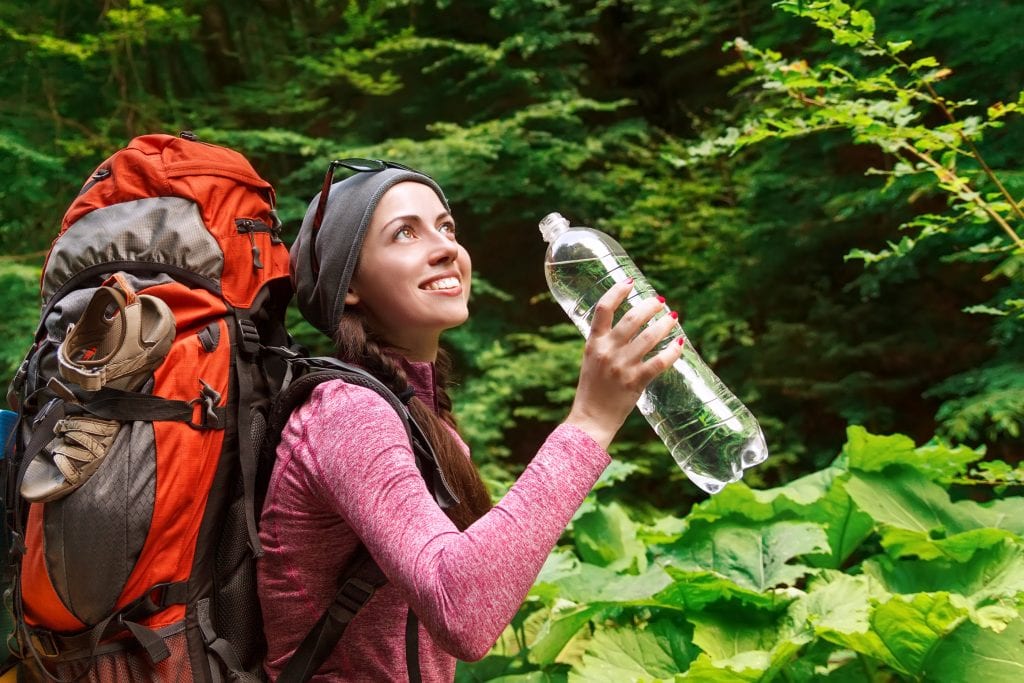 Well, it’s a fact that you’ll need to drink much more than you can carry on day one, and another reason why your map is so important. When planning your route, trek via water sources like fresh springs or streams, then purify the water before you drink it.
Well, it’s a fact that you’ll need to drink much more than you can carry on day one, and another reason why your map is so important. When planning your route, trek via water sources like fresh springs or streams, then purify the water before you drink it.
Top tip: Boiling water for at least a minute kills the bacteria and saves you carrying a fancy filtration kit!
How does the sleeping part work?
There aren’t likely to be organised campsites in the wilderness, so you get to decide which patch of nature to call home for the night!
Step 1. Choose a spot
It is generally advised to sleep near the trail, but not on it – about 100 yards away should be fine. Make sure you don’t block a water access point!
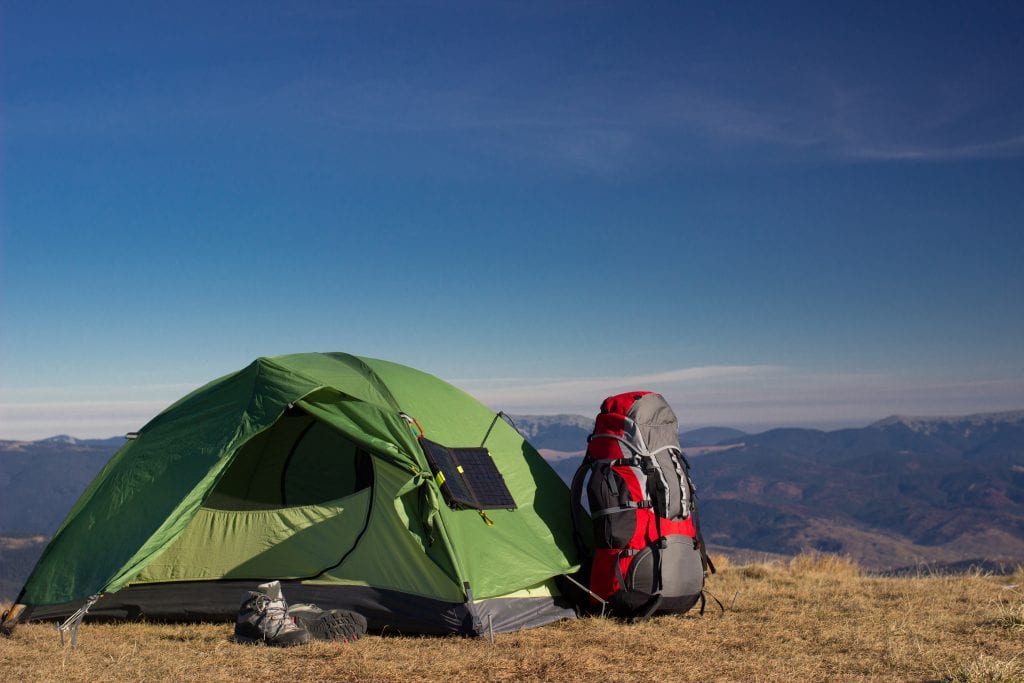 Step 2. Check the terrain
Step 2. Check the terrain
There’s nothing worse than bedding down on spiky rocks, so choose somewhere peaty or leafy
Step 3. Pitch your tent
Be sure to check you have all the parts before you leave home!
Step 4. Get out your sleeping gear
Don’t leave home without a sleeping pad (I use my yoga mat). I’ll let you into a ‘how to start backpacking’ secret; although this is the most important insulating layer between you and the cold ground, some experienced campers don’t realise it!
You should also take a small pillow and sleeping bag to cosy up in. They come in sizes for each season – but the warmer the bag, the heavier it is. When choosing, estimate your nighttime temperature and match it to the range of the sleeping bag. Sleep tight!
Backpacking Need to know
Now that you’re bursting full of top tips about how to start backpacking, there are a few more things to bear in mind (get it?!)
Did you know that you should:
- Always give way to people going uphill
- Never light a fire unless it’s allowed in your area
- Bury your poop with a spade
- Know the phone number for mountain rescue
- Let others know your planned route
- Pick up any rubbish you see, to save the landscape for future visitors, and for the creatures who call it home
For your first ever backpacking trip, we recommend going with a friend or a guide who knows their fauna from their flora. But if you go it alone and you get lost – don’t panic. Retrace your steps to the last place you recognise.
It’s also really important to make sure you’re in good shape before the trip – going running, swimming or working out in the gym is great for you anyway, but it can also be the difference between a good trip or an incredible trip!
And finally, you’ll be glowing with the accomplishment of having earned every single one of those fantastic views! So, take these steps towards how to start backpacking, and get out there to begin your own fantastic original adventure!
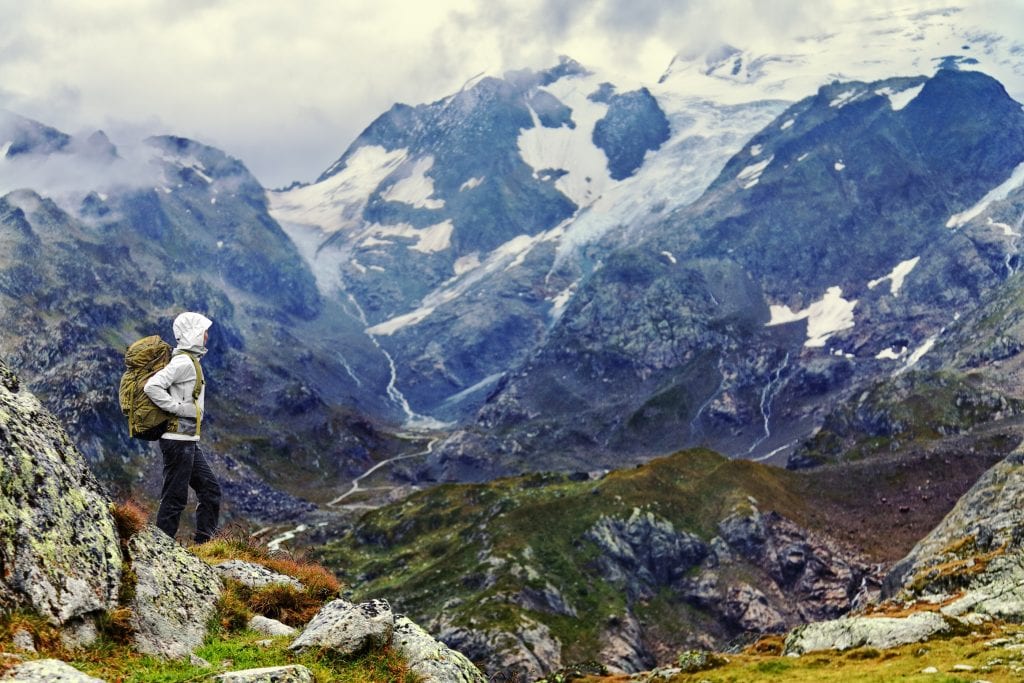

Lucy Gomez
Lucy Gomez is a camp editor at Getcampingwild.com. She has been camping her entire life and Getcampingwild.com is a place where campers can share everything we’ve learned along the (sometimes prickly) way in the wilderness.



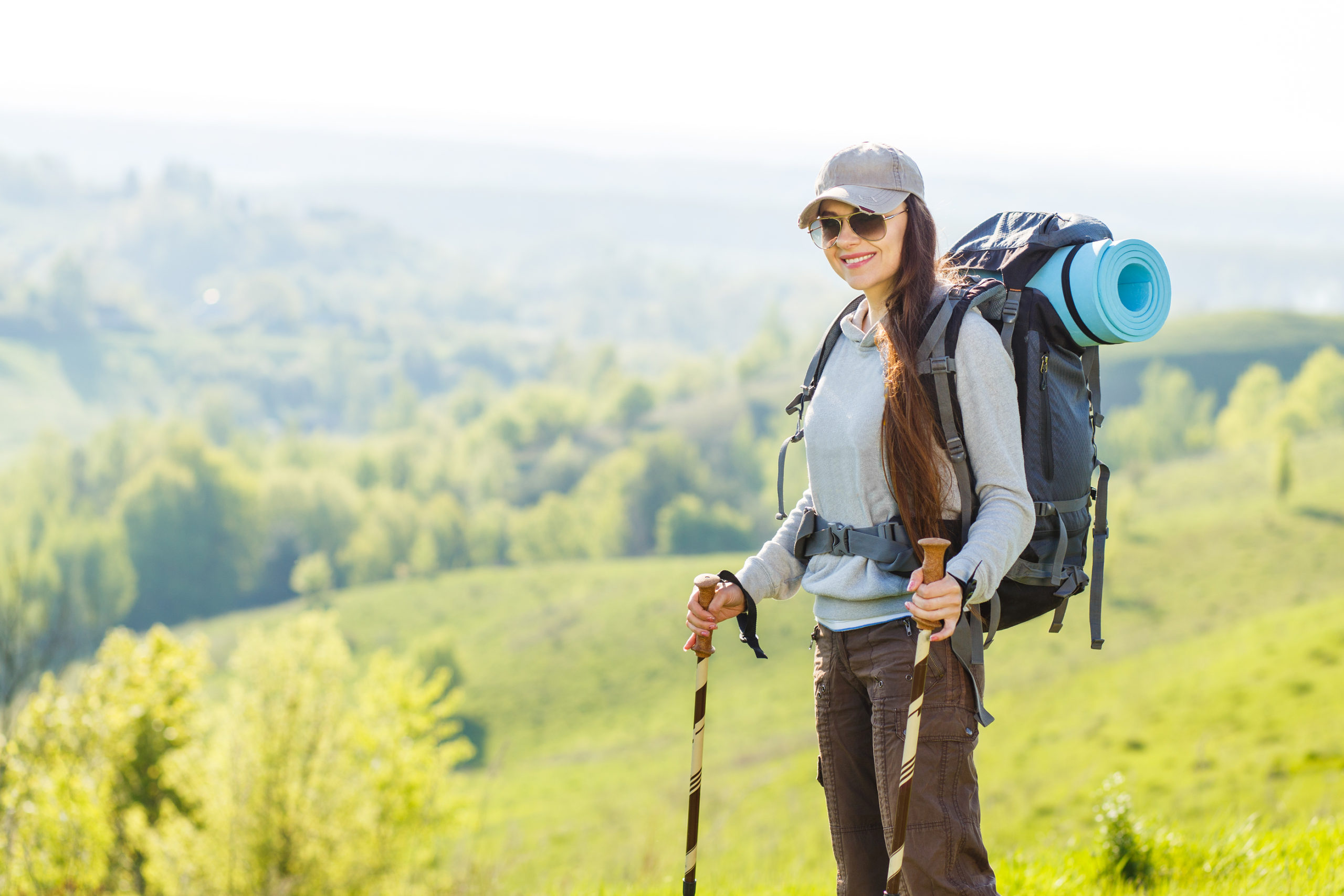










Leave a Reply